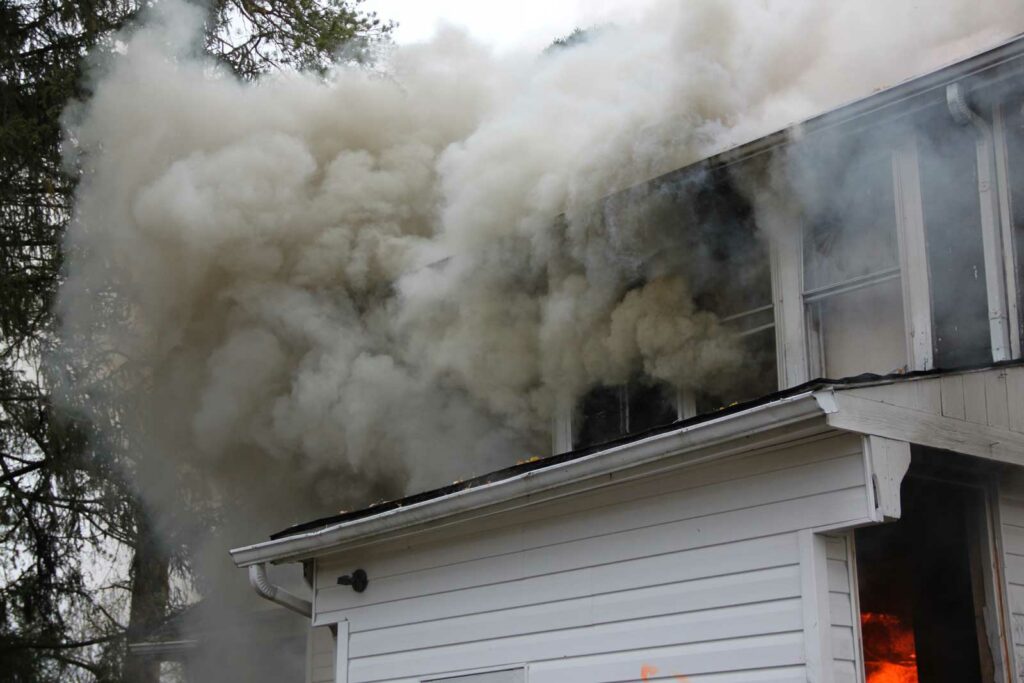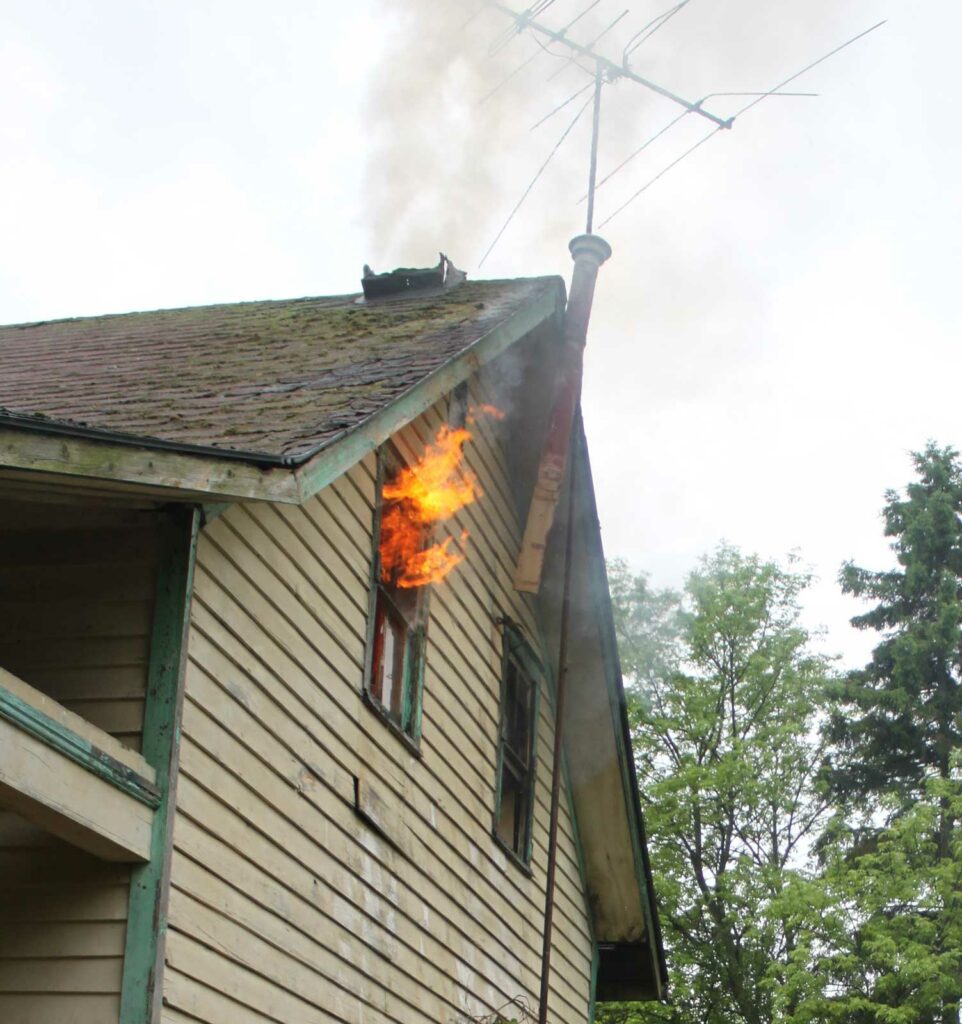Photos by author
In this series about rapid fire development (RFD), we have focused on the science behind flashover and how water is used to aggressively cool the gases and the environment to reduce the heat-release rate and contain radiant heat. The third and final part of this series is a study of ventilation as a companion to using water for aggressive cooling.
Using science and data, the fire service has been re-examining the usefulness and the purpose of ventilation. This re-examination has led some fire departments to shy away from ventilation; some have instituted a no-roof-ventilation practice and rely instead on horizontal, mechanical, and hydraulic ventilation. Although these three types of ventilation work well and have their place in firefighting, vertical ventilation cannot be removed from the arsenal.
Vertical ventilation, used along with water, aggressively cools the fire and the environment by creating a natural travel path for hot gases, unburned particles of combustion, and steam to escape quickly and easily. These gases are lighter than cold air and naturally want to travel up.
RELATED FIREFIGHTER TRAINING
The Great Vertical Ventilation Debate Rekindled: Lightweight Construction and Vertical Ventilation
Truck Company Ops: Vertical Ventilation
Vertical Ventilation: Should it Still be a Primary Tactical Assignment?
Smoke always travels to a lower atmospheric-pressure zone or area. A structural fire in a residential home has two distinct atmospheric pressure zones: the high and the low zones. The high-pressure zone is inside the structure, where heat generated from the fire forces the air to expand and fill the building. The expanding air, coupled with high-density smoke, increases the atmospheric pressure of the room. The smoke will thus push itself out toward the low-pressure zone, which is outside the structure.
Atmospheric pressure is why firefighters see smoke exiting from any structure fire – it is following its natural path, which is up and out. Once water is applied to the fire and the environment, the smoke will expand, cool, and need an escape route. Vertical ventilation gives the heated air a natural pathway to exit the structure.

There are two distinct flow paths that can either aid or hinder firefighters: the unidirectional and bidirectional flow paths. A unidirectional flow path (see photo 1) has only one travel direction, either going in or going out. Either hot gases, unburned products of combustion, and smoke will go out from the structure, or there will be a fresh supply of air coming into the structure. Notice in photo 1 how there is nothing but smoke exiting from the far-left window.

A bidirectional flow path (see photo 2) is two travel paths occurring at once: smoke is exiting in the top half of a structure while the bottom half has an incoming supply of air. The window in photo 2 has fire exiting from the top half while the bottom half is wide open for incoming air supply
Vertical ventilation, done correctly, creates a unidirectional flow path to allow smoke and unburned gases to exit a structure. A vent placed directly above the fire area forms a natural travel path for the gases and steam that is created once firefighters start to apply water on the fire and the surrounding environment.
So why have fire services moved away from using vertical ventilation? The reasons vary, but a common denominator is lightweight construction and failure times. Fire services are seeing faster failure times with the increase in lightweight construction in roof trusses, which means roofs are rapidly compromised by fire and are too dangerous for firefighters to access. Diligence needs to be exercised to make sure crews can still access the roof; this involves using size-up to determine if it is safe for firefighters.
One tactic to help overcome lightweight roof trusses is to use two roof ladders. Typically, firefighters bring one roof ladder to vent the roof, but in the case of lightweight roof construction, two are more effective.

As you see in photo 3, two roof ladders placed close to each other allow two firefighters to easily work together to make a vertical opening. Each firefighter has a platform on which to work without having to step onto the roof itself. The roof ladders are supported at the top and at the bottom of the roof, thus displacing the weight of the firefighters. Firefighters should spend a limited amount of time up on the roof – they are there only to make the cut and then get off.
Firefighters need to be aggressive in their approach to gain an upper hand on rapid fire development. One method is to aggressively cool the fire and, at the same time, ventilate the structure. Ventilation and aggressive cooling go hand in hand to reduce the instances of flashover and to keep firefighters safe.

Mark van der Feyst has been in the fire service since 1999 and is a firefighter with the Fort Gratiot (MI) Fire Department. He is an international instructor teaching in Canada, the United States, and India, and at FDIC. He is also the lead author of Residential Fire Rescue (Fire Engineering Books & Video). He can be contacted at Mark@FireStarTraining.com.
MORE MARK VAN DER FEYST
Go High: Rungs Above the Roofline
Firefighting Basics: Aggressive Cooling and Preflashover Conditions
Firefighter Training Drill: Reverse Hold of Pike Pole or Roof Hook
Firefighting Basics: Rapid Fire Development and Aggressive Cooling

